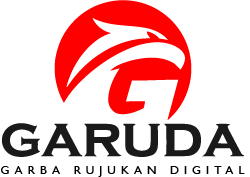THE EFFECTIVENESS OF INQUIRY BASED TEACHING TO TEACH GRAMMAR
DOI:
https://doi.org/10.22460/eltin.v2i2.p%25pAbstrak
Inquiry-based teaching is a teaching method that focuses on students’ investigation on questions that are challenging in which the questions will lead students to be active and creative to find the answers. The stages are asking, investigating, creating, discussing, and reflecting. This article refers to an experimental study about the effectiveness of Inquiry based teaching to teach grammar at SMK Tamasiswa Sukoharjo, Central Java. The population of this research is the first grade students of SMK Tamansiswa Sukoharjo. The sample of this research consists of two classes; class A was used as the experimental group treated by using inquiry based teaching and class B as the control group treated by using lecture method. The sampling technique used is cluster random sampling. The instrument used to collect the data is grammar mastery test. The data were analyzed by using t-test. Based on the results of the analysis, the findings of this research is inquiry based teaching is more effective than lecture method to teach grammar. Based on the above findings, it can be concluded that inquiry based teaching is an effective method to teach grammar for the first grade students of the SMK Tamansiswa Sukoharjo.  Keywords: Inquiry based Teaching, grammar mastery, lecture methodReferensi
Bastone, R. (1994). Grammar. Oxford: Oxford University Press.
Branch, J. (2004). Focus On Inquiry. Alberta: Alberta Learning.
Brown, D.H. (2004). Language Assesment: Principles and Classroom Practice. San Francisco State: Longman.
__________. (1994). Principles of Language Learning and Teaching. New York: Addison Wesley Longman, Inc.
Dewey, J. (2010). Inquiry Based Teaching. Retrieved on June 1, 2013, from http://www.inquiry. uiuc.edu/inquiry/process.php.
Elliot, S. N. et al. (1999). Educational Psychology. Effective Teaching Effective Learning. Singapore: Brown and Bechmark Publisher.
Flight, D. (2003). 8 Advantages of Cooperative Learning. Retrieved on June 4, 2013 from http://www.thai-edu-inus.org/8-advantages-of-cooperative learning.htm.
Gulo, W. (2008). Strategi Belajar Mengajar. Jakarta: PT. Grasindo.
Harmer, J. (1999). How to Teach Grammar. London: Longman.
__________. (1998). The Practice of English Language Teaching. London: Longman.
Haunstein, A. Dean. (1998). A Conceptual Framework for Educational Objectives: A Holistic Approach to Traditional Taxonomies. Lanham: University Press of America, Inc.
Johnson, D. W., & Johnson, R. (1994). Leading the cooperative school (2nd ed.). Edina, MN: Interaction Book Company.
Kindsvatter, R, & Ishler, W. W. M.. (1996). Dynamics of Effective Teaching. New York: Longman Publishers.
Krashen, S. (1984). Principles and Practice in Second Language Acquisition. Oxford: Pergamon.
Lock, G. (1997). Functional English Grammar: an Introduction for Second Language Teachers. Cambridge: Cambridge University Press.
Nunan, David. (2005). Practical English Language Teaching: Grammar. New York: McGraw-Hill Companies, Inc. 12221 avenue of the Americas.
Quirk, R. (1998). A Comprehensive Grammar of the English Language. London: Longman.
River, W. M. (1987). Interactive Language Teaching. Cambridge: Cambridge University Press.
Slameto. (2003). Belajar dan Faktor-Faktor yang Mempengaruhinya. Jakarta: Rineka Cipta.
Sund, R. B., & Trowbridge, L. W. (1993). Teaching Science by Inquiry in the Secondary School. Ohio: Charles E. Merill Books.
Strumpf, Michael and Auriel Douglas. 2004. Golden’s Concise English Grammar. Kuala Lumpur: Golden Books Centre SDN.BHD.
Thornbury, S. (2009). How to Teach Grammar. London: Longman
Ur, P. (2009). Grammar Practice Activities: A Practical Guide for Teachers. Cambridge: CUP.
Webster, M. (1992). Webster’s Third New International Dictionary. Chicago: Encyclopedia Britannica INC.









